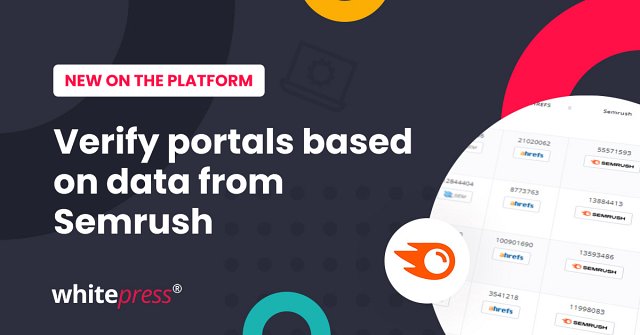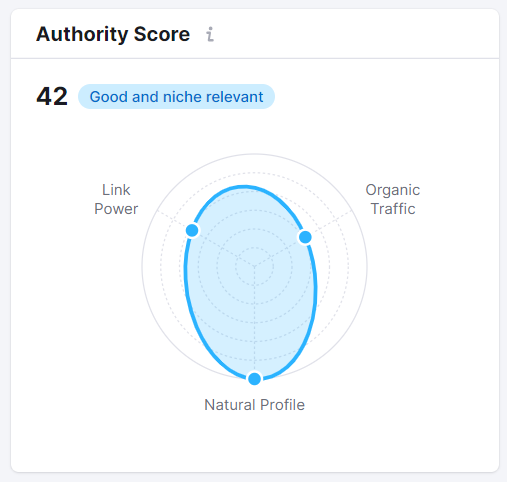Even more data in WhitePress®: we've added Semrush
(4 min. read)

Semrush, alongside Ahrefs, is one of the most popular tools for analyzing websites and optimizing them worldwide. Its data enables monitoring and interpretation of website visibility in search engines. That's why we decided to add it to our environment—to provide you with even more information needed in order to make decisions about choosing a portal. Find out what Semrush metrics you'll find in WhitePress®.
How to check Semrush data?
The data is available directly from the list of portals in a new column called 'Semrush'. For each portal, its estimated organic traffic as calculated by the tool is visible (along with the tool's logo). By clicking on it, you'll see even more information about the selected publisher.

Organic Traffic
The main metric from Semrush that you'll see on the list of portals is Organic Traffic. This is the estimated traffic from search engines based on the positions occupied by the website on keywords from the tool's database and the average monthly search volume.
The actual organic traffic for the portal may be significantly higher. Each tool has different data sets and acquires them in different ways, hence the differences between the presented data from visible sources. Access to multiple metrics at once allows you to look at the portal from different perspectives to properly assess its potential. Information about estimated organic traffic from Semrush is especially useful for international projects, for which data from Senuto and Semstorm are incomplete.

In addition to the average monthly traffic on the site, clicking on the Semrush logo also allows you to check the trend for estimated organic traffic from the last two years. This chart enables you to determine whether the selected website is still growing or has been losing readers recently. Additionally, we also provide the sources of organic traffic, indicating in which countries the portal is most frequently searched.
Furthermore, in the advanced filters, there is now an option to exclude sites with a 'Semrush Organic Traffic' indicator below a specified value.
Domain Authority
Many SEO experts surely remember the Page Rank metric and the small Google toolbar where it could be checked until 2016. Although it's no longer the most important ranking factor, Page Rank is still somewhat utilized in Google's main algorithm. Tools such as Ahrefs, MOZ, or Semrush create proprietary metrics that are theoretically closest to the legendary PR and correspond to domain authority.
SEO tools are not among the cheapest, but remember, they're not Pokémon - you don't have to catch them all. However, to have a comprehensive view of the situation, it's worth comparing data from different sources, for example, through WhitePress®. Having access to various metrics helps our advertisers make informed decisions.
One metric proposed by Semrush is the Authority Score. Its value, determined on a 100-point scale, is calculated based on three main elements:
- Link strength (quantity and quality of the link profile)
- Organic traffic (estimated average monthly)
- Naturalness of the link profile (determined based on the ratio of spam links to natural ones).

Other indicators from Semrush
Other website data enabling the assessment of its quality include:
- Keywords: the number of keywords for which the domain ranks in positions 1–100 in organic search results, according to Semrush.
- Referring domains: an indicator specifying the number of unique external domains linking to the indicated portal, according to Semrush.
- Outgoing domains: the number of unique external domains to which links from the specified site lead.
- Backlinks: a metric that indicates the number of all links reported by Semrush leading to the site from external domains. The quantity and quality of links influence the visibility of the page on Google.
It's worth considering the last three metrics together. Verified in their context, they can tell much more about the analyzed portal. If you want to publish a sponsored article to build valuable links to your site, then the ratio of incoming domains and links to outgoing links will be the most important metrics for you.
By using data from Semrush provided in WhitePress® and analyzing various metrics, you can make informed decisions regarding the choice of portals from which you acquire links.
